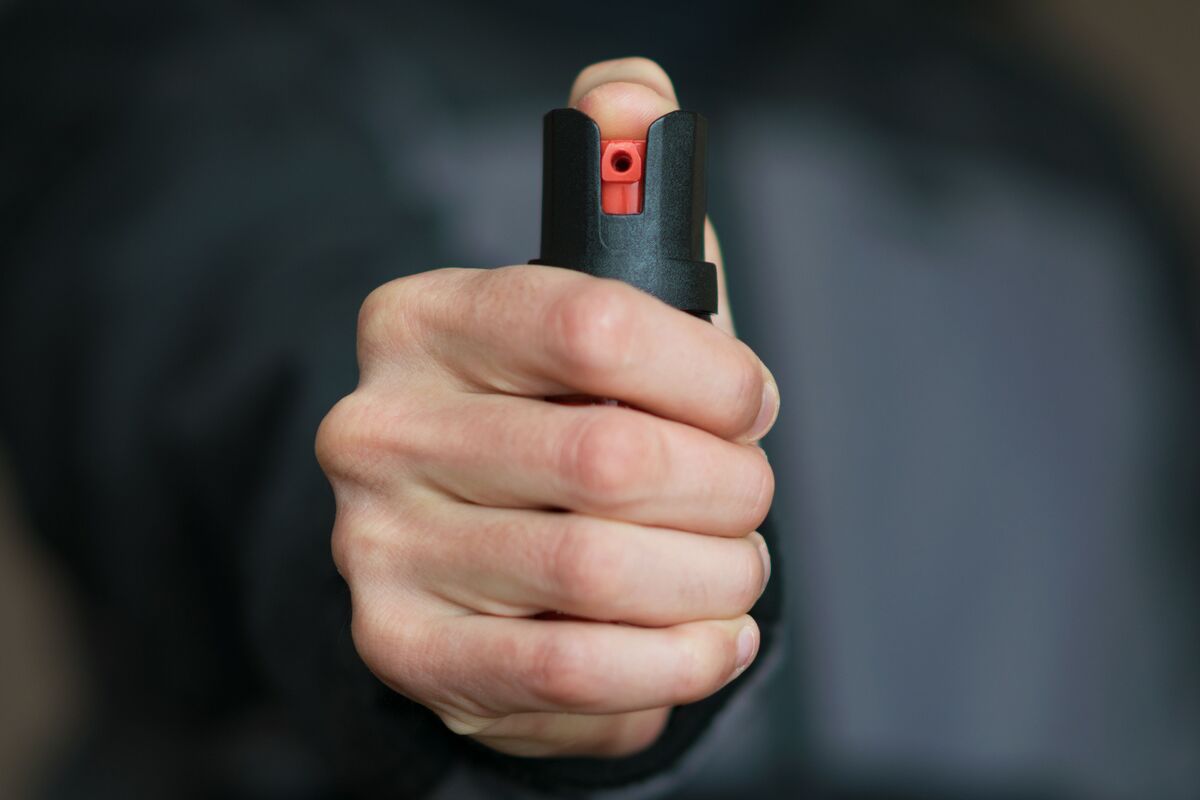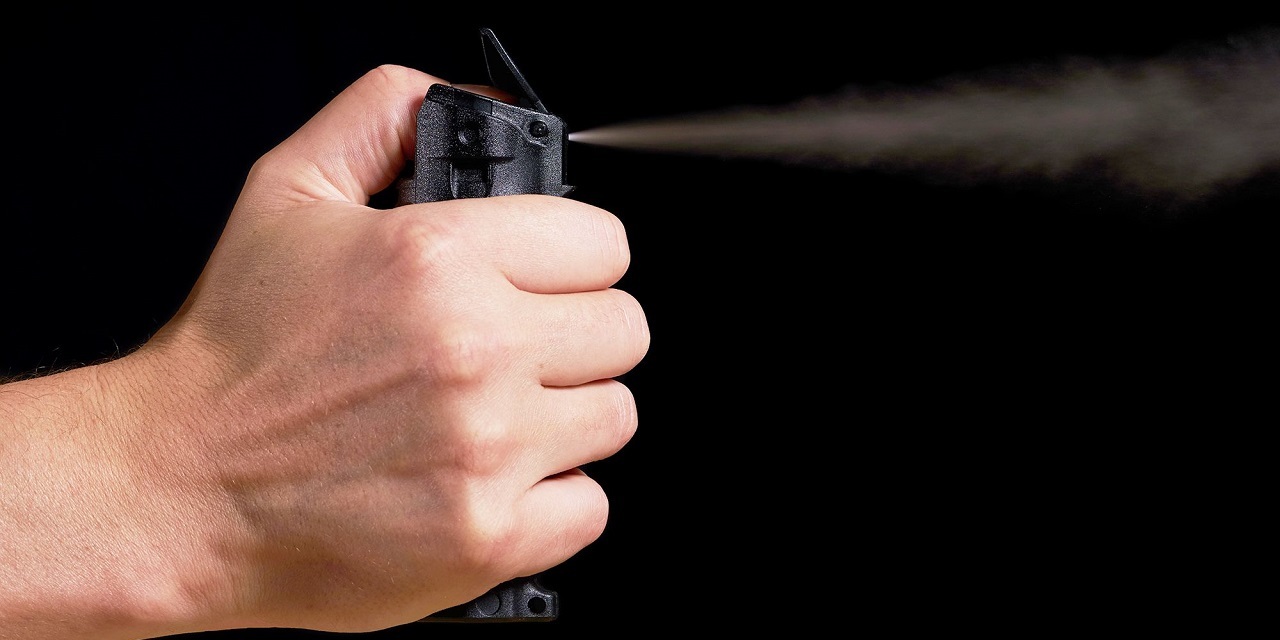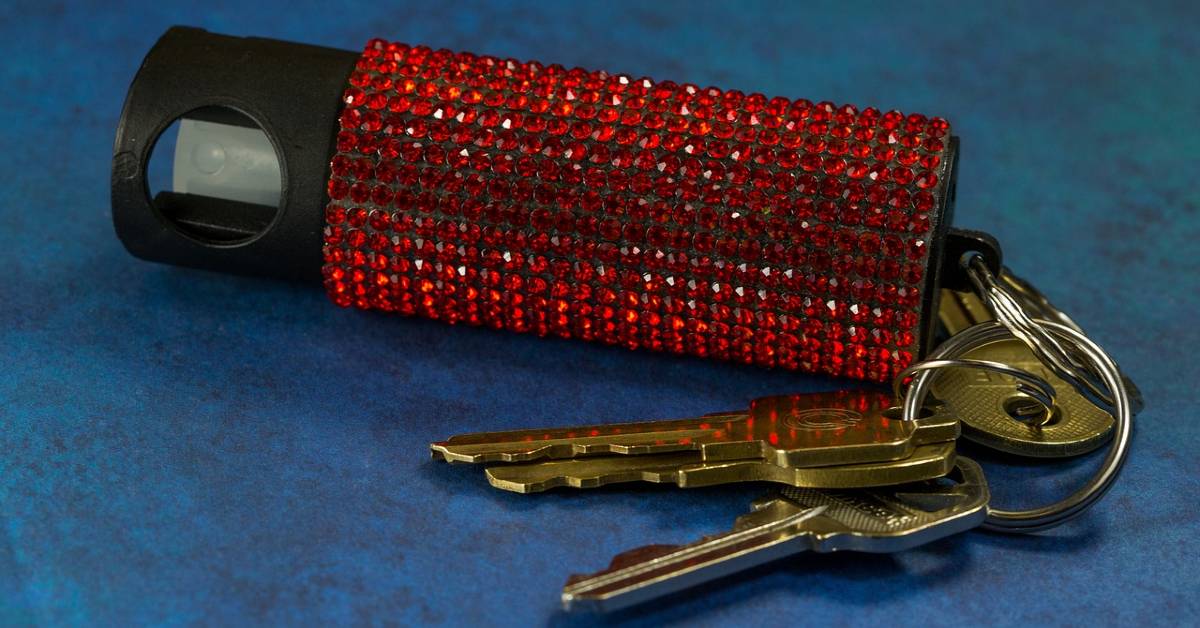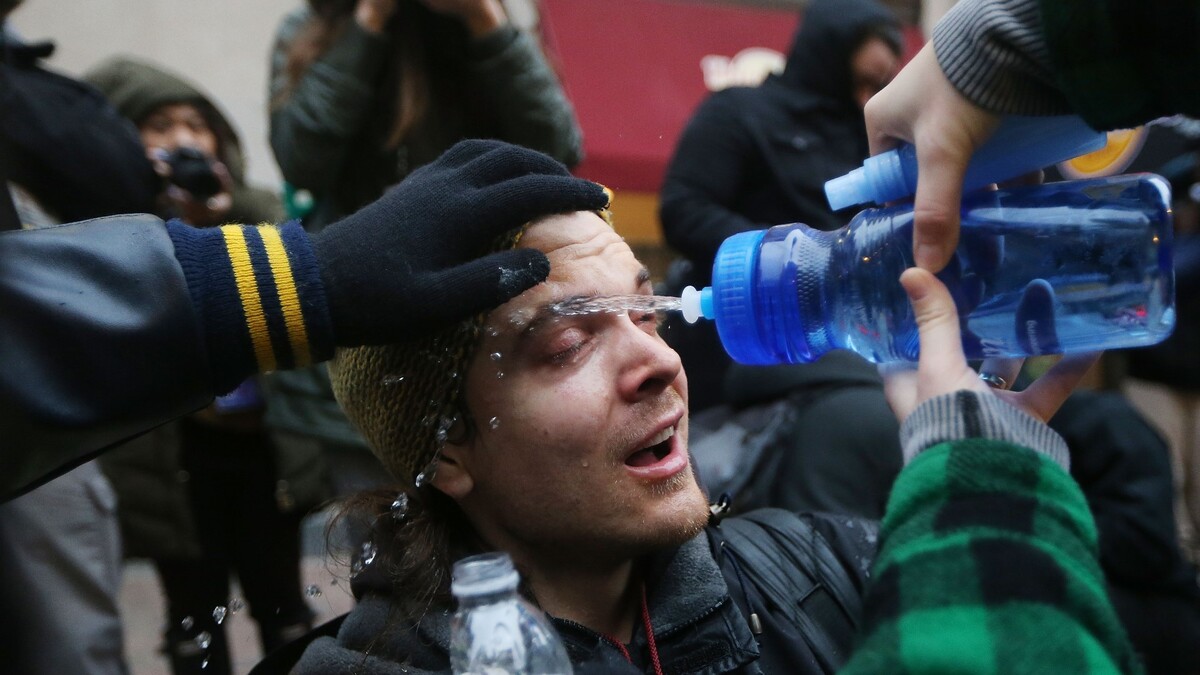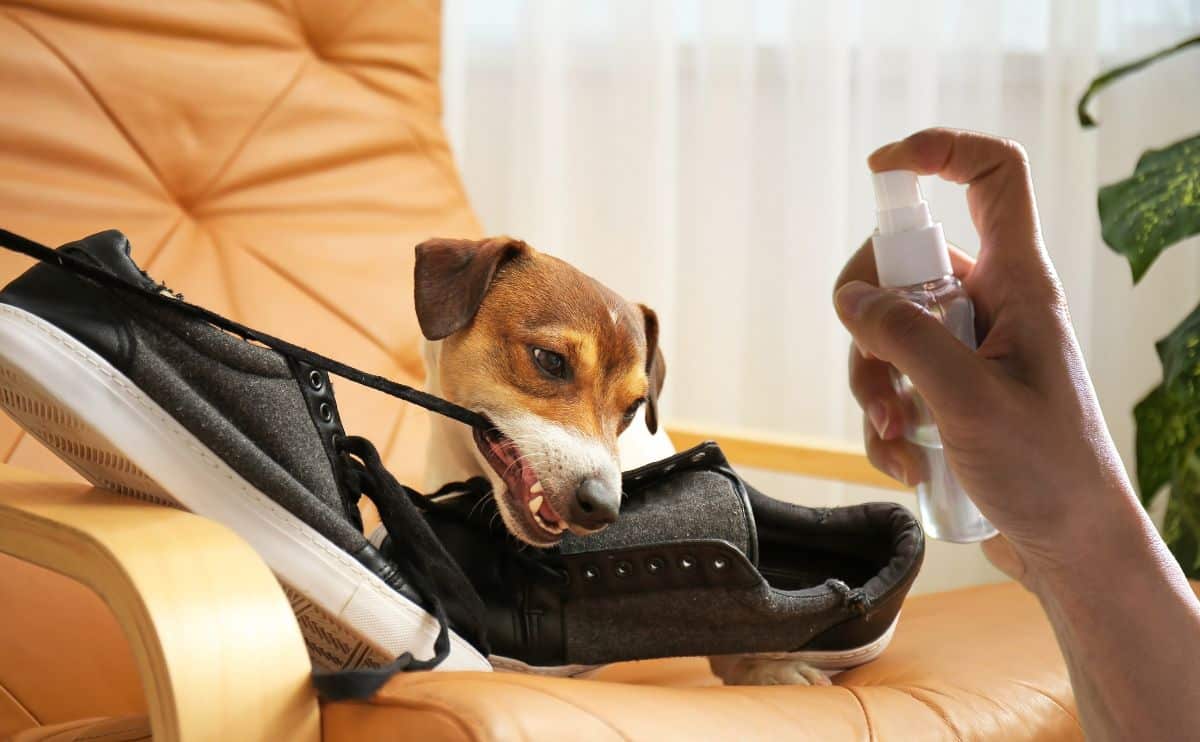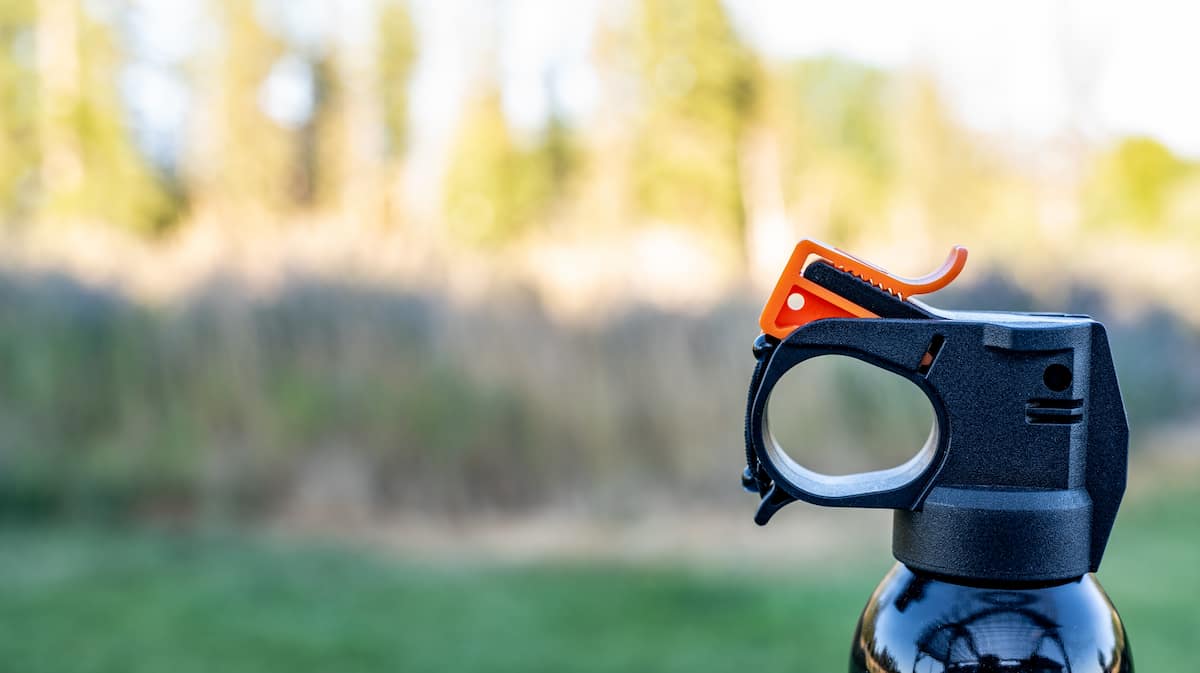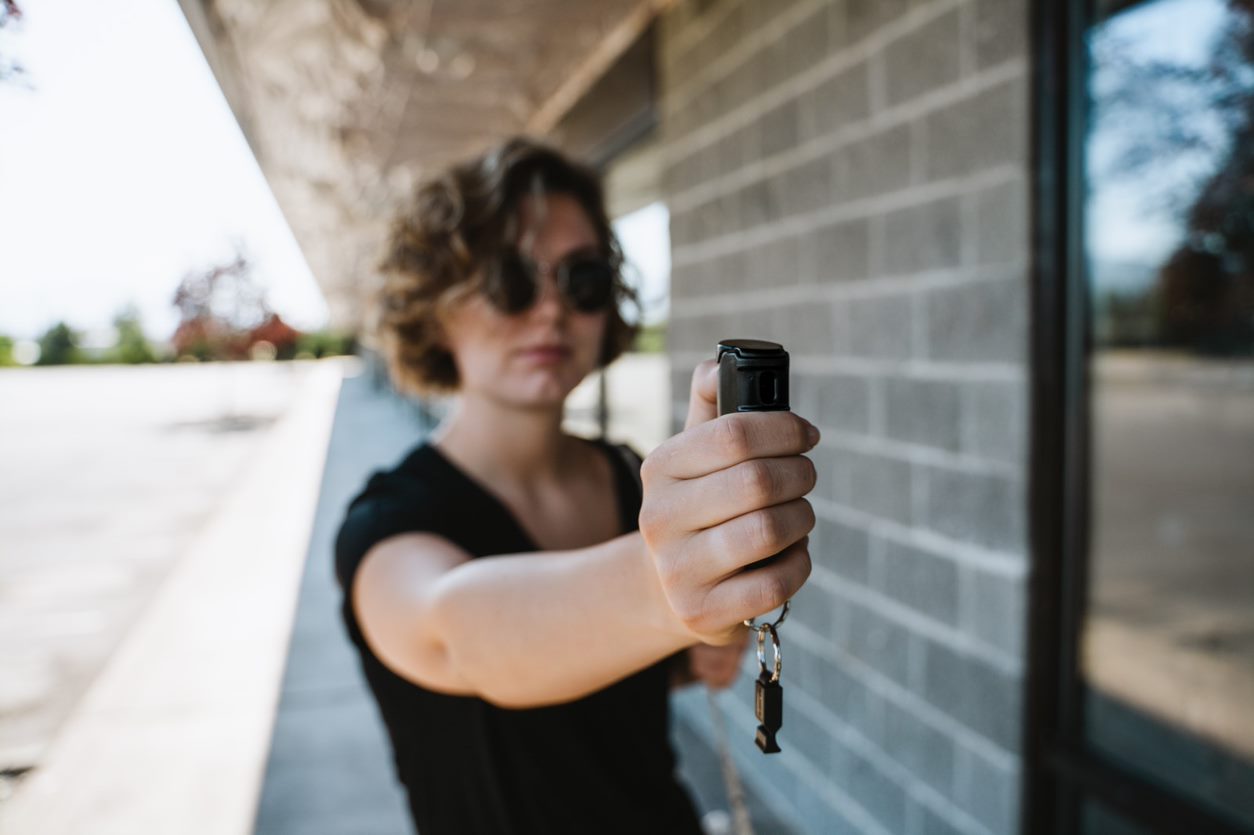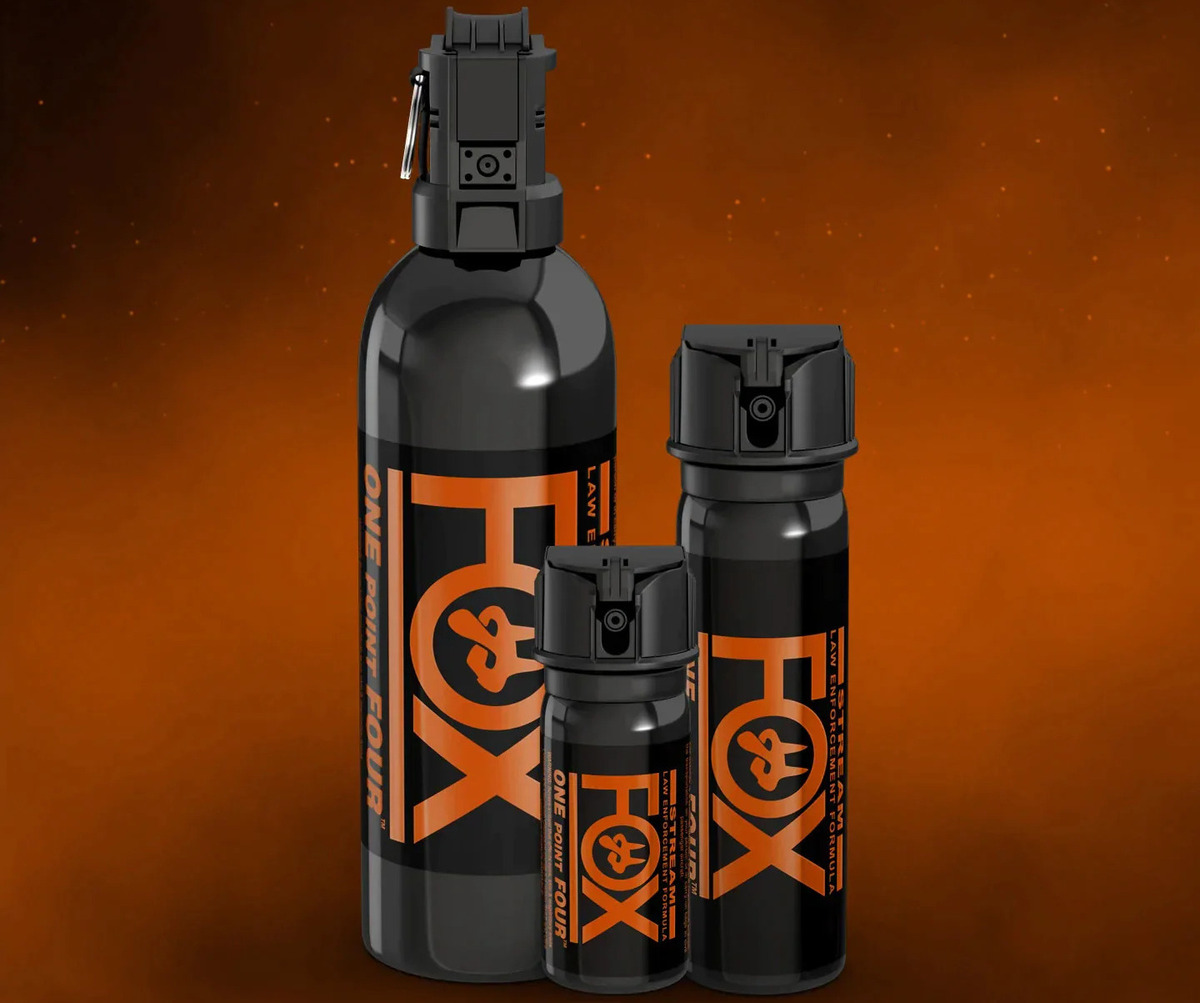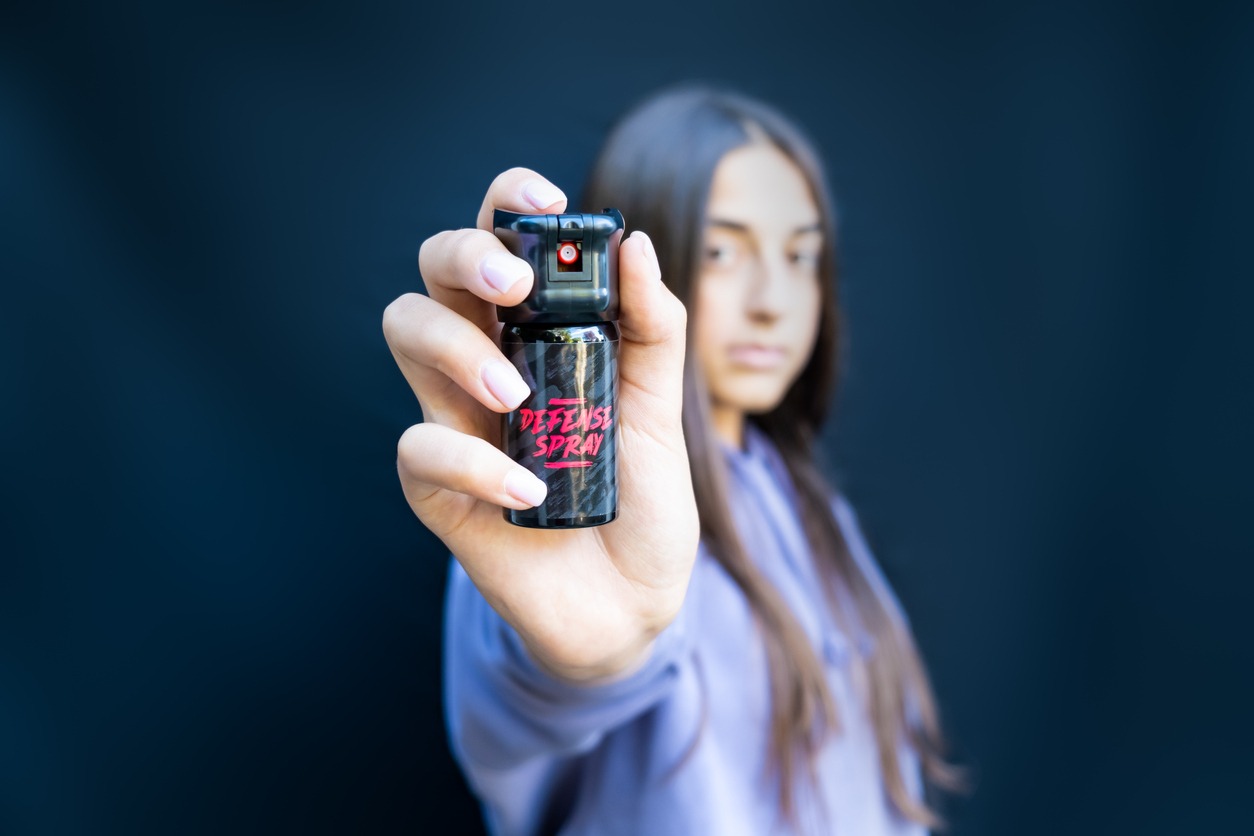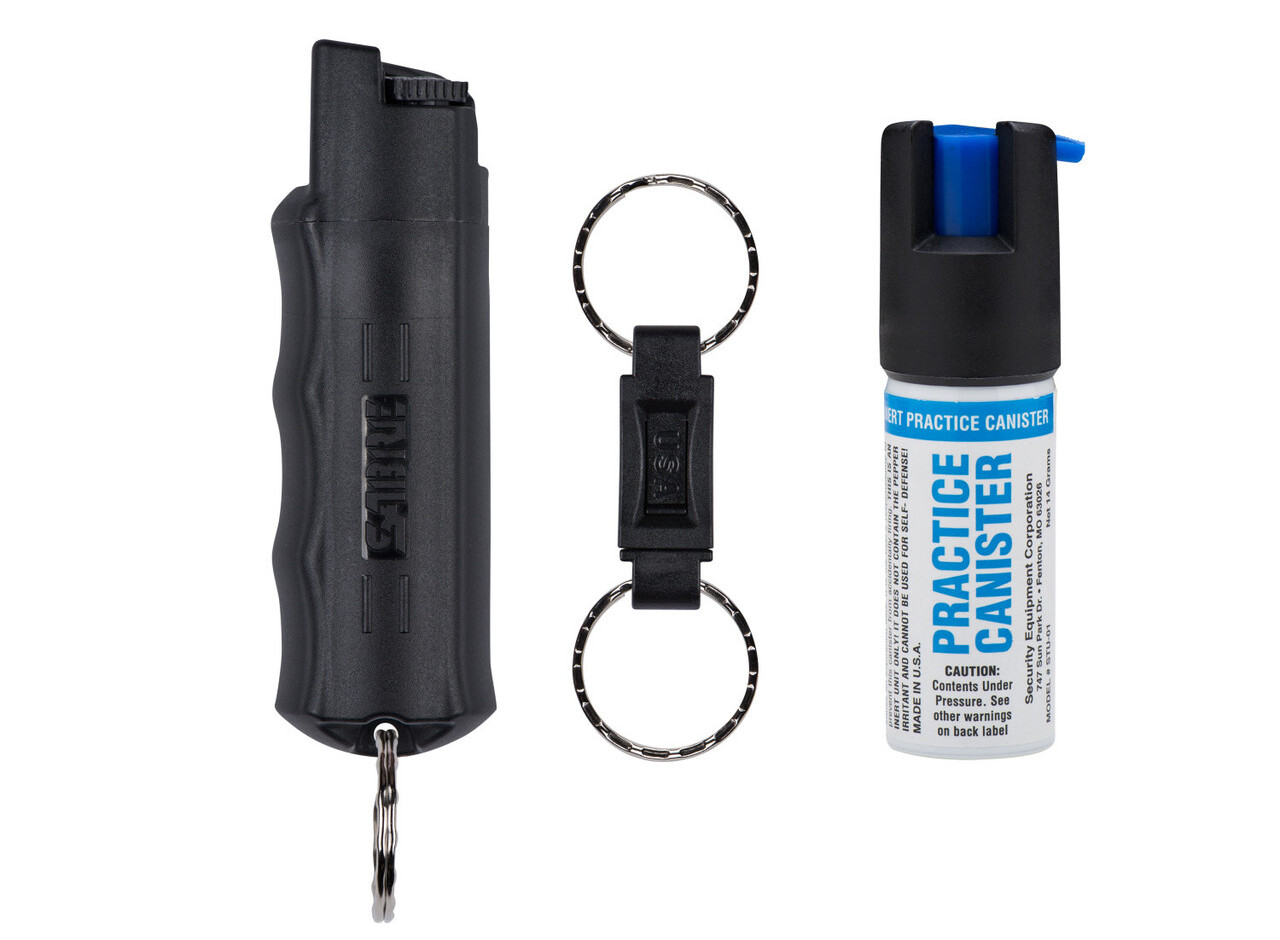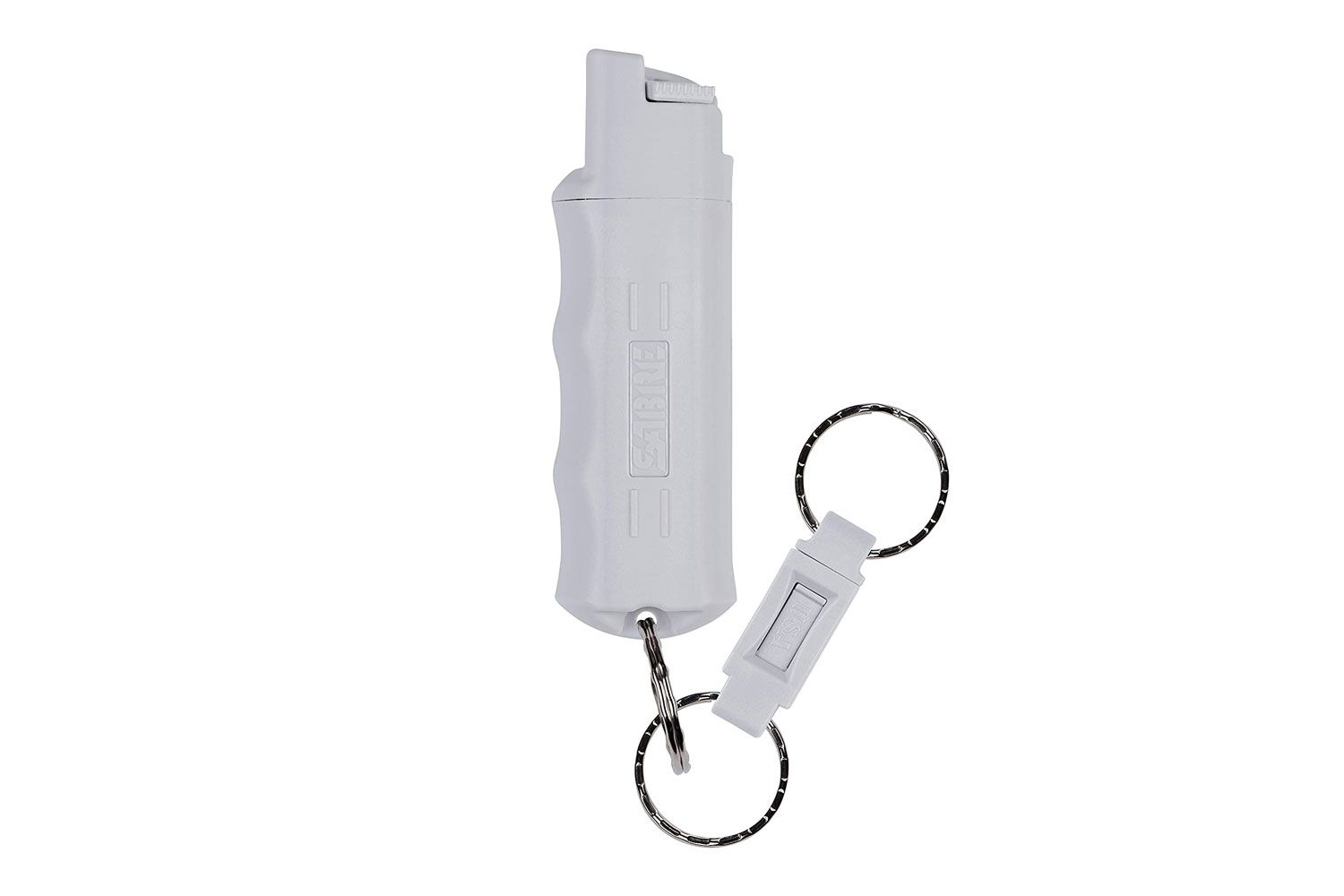Home>Home Security and Surveillance>How To Safely Test A Pepper Spray
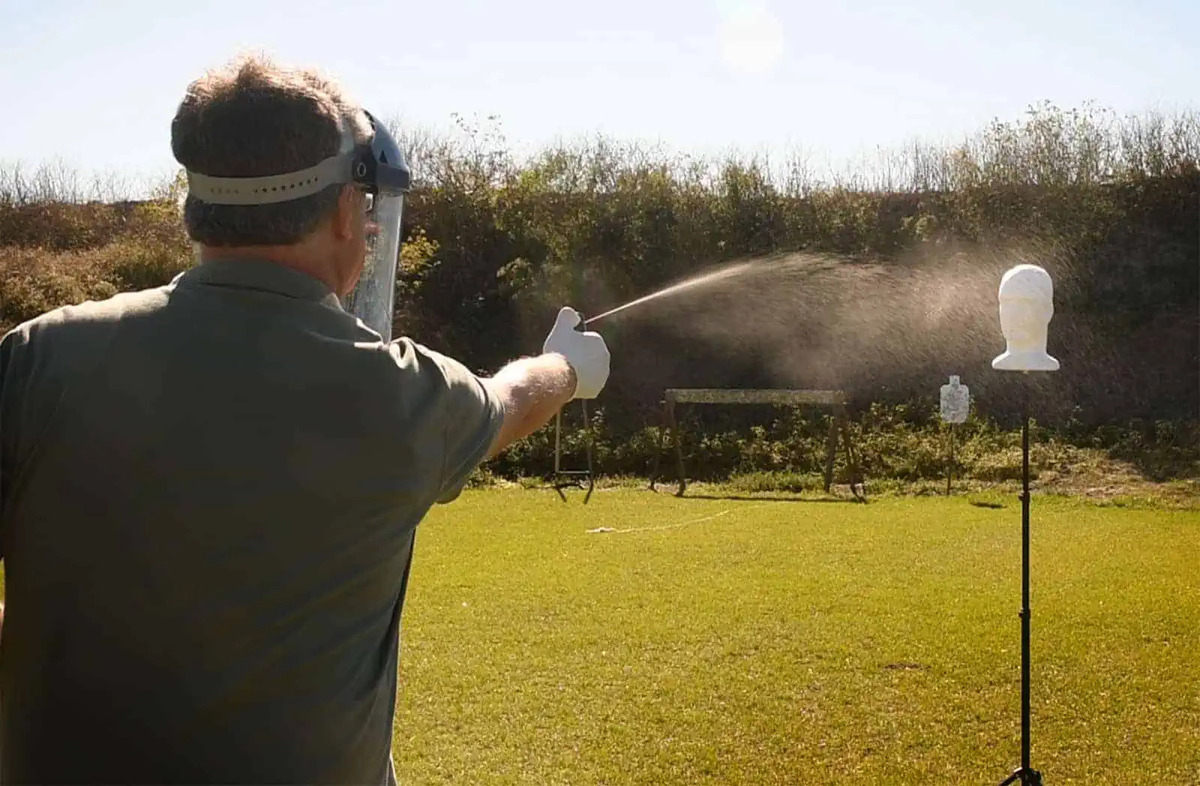

Home Security and Surveillance
How To Safely Test A Pepper Spray
Modified: March 6, 2024
Learn how to safely test a pepper spray at home with our step-by-step guide. Ensure your home security and surveillance by understanding the proper technique and precautions.
(Many of the links in this article redirect to a specific reviewed product. Your purchase of these products through affiliate links helps to generate commission for Storables.com, at no extra cost. Learn more)
Introduction
Welcome to our comprehensive guide on how to safely test a pepper spray. In today’s world, personal safety is a top priority for many individuals. With the increasing concerns about personal security, having a reliable self-defense tool like pepper spray can provide a sense of confidence and peace of mind.
Pepper spray, also known as OC spray (oleoresin capsicum spray), is a potent non-lethal weapon widely used for self-defense purposes. It contains a concentrated form of capsicum, a compound found in chili peppers, which causes temporary blindness, inflammation, and intense discomfort when sprayed onto an attacker’s face.
While pepper spray is a powerful tool, it’s important to understand how to use it safely and effectively. This guide will walk you through the process of testing pepper spray to ensure its reliability and avoid any accidental misuse.
Before diving into the testing process, it’s essential to mention that while pepper spray can be an effective self-defense tool, it’s vital to follow local laws and regulations regarding its use. Different jurisdictions may have specific regulations regarding where and when pepper spray can be carried and used. Always be aware of the laws in your area and act responsibly.
Now that we have laid the groundwork, let’s delve into the details of how to safely test a pepper spray to ensure its functionality and effectiveness when you need it the most.
Key Takeaways:
- Testing pepper spray safely is crucial for personal safety. Follow instructions, wear protective gear, and choose the right environment to ensure a secure testing process.
- After testing, clean yourself, decontaminate the area, and store the pepper spray properly. Reflect on the test and stay updated on its expiration date for continued reliability.
Read more: How To Spray Pepper Spray
Understanding Pepper Spray
Before we jump into testing pepper spray, it’s important to have a basic understanding of how it works and its key components.
Pepper spray typically comes in an aerosol canister, making it easy to carry and deploy. The active ingredient in pepper spray is oleoresin capsicum (OC), which is derived from hot peppers like cayenne and jalapeno. When sprayed onto an attacker, OC irritates the eyes, nose, throat, and skin, causing temporary incapacitation.
Pepper spray is rated based on its Scoville Heat Units (SHUs), which measure the concentration of capsaicinoids, the compounds responsible for the heat. The higher the SHU rating, the more potent the spray. It’s important to choose a pepper spray with an appropriate SHU level to ensure effectiveness during an attack.
Most pepper sprays also contain an inert ingredient, usually water or oil, that helps to deliver the OC in a fine mist. This mist allows for better coverage and faster absorption into the skin and mucous membranes, maximizing its effects.
It’s worth noting that pepper spray is designed to be non-lethal and temporary, allowing the affected individual to recover once the effects wear off. However, every person can react differently, and some individuals may have a higher sensitivity to the spray. It’s essential to use pepper spray responsibly and only in situations where self-defense is necessary.
Now that we have a better understanding of how pepper spray works, let’s move on to the next step: choosing the right testing environment.
Choosing the Right Testing Environment
When it comes to testing pepper spray, selecting the appropriate environment is crucial to ensure safety and accuracy. Here are some factors to consider when choosing the perfect testing environment:
- Outdoor or Well-Ventilated Area: It’s highly recommended to conduct the test outdoors or in a well-ventilated area to minimize the effects of the spray and prevent the spray from lingering in an enclosed space.
- Avoid Windy Conditions: Wind can significantly affect the direction and effectiveness of the spray. It’s best to choose a day with calm weather or, if testing indoors, make sure the area is well-ventilated to prevent the dispersion of the spray.
- Safety Distance: Ensure that you have enough distance between yourself and any potential obstructions or bystanders to prevent any unintended harm. A distance of at least 5-10 feet is recommended.
- Clear and Open Space: Selecting a clear and open space without any obstacles or hazards is essential to avoid accidents and allow for easy movement during the test.
- Avoid Testing Near Flame or Heat Sources: Pepper spray is flammable, and therefore, it’s crucial to steer clear of open flames, heat sources, or any combustible environment during the testing process.
By carefully considering these factors and selecting an appropriate testing environment, you can ensure the safety of yourself and others while conducting the pepper spray test.
Now that we’ve covered the importance of choosing the right testing environment, let’s move on to the next step: preparing for the test.
Preparing for the Test
Before conducting the pepper spray test, it’s essential to take a few necessary precautions to ensure your safety and the accuracy of the results. Here are some steps to follow when preparing for the test:
- Read the Instructions: Familiarize yourself with the instructions provided by the manufacturer. Different pepper sprays may have specific guidelines or recommendations for testing.
- Wear Protective Gear: To minimize the risk of accidental exposure, it’s recommended to wear protective gear such as safety goggles, a face shield, gloves, and long sleeves. This will help protect your eyes, skin, and respiratory system from any potential spray-back.
- Inform Others: If you’re conducting the test in a shared space, it’s important to inform those around you about what you’re about to do. This way, they can take appropriate precautions and maintain a safe distance.
- Secure the Testing Area: Make sure the testing area is clear of any potential hazards or objects that may obstruct your movements. Create a designated area where the test will take place, ensuring it’s away from any valuable items.
- Have a First-Aid Kit on Hand: Accidents can happen, so it’s always a good idea to have a first-aid kit nearby, just in case. This should include items such as antiseptic wipes, bandages, and saline solution for rinsing the eyes, if necessary.
- Check Expiration Date: Ensure that your pepper spray is within its expiration date. An expired canister may not deliver the desired effects, compromising your safety.
By following these steps and adequately preparing for the test, you can minimize potential risks and conduct the pepper spray test in a safe and controlled manner.
Now that we’re prepared for the test, let’s move on to the next step: conducting the test safely.
When testing pepper spray, always aim away from yourself and others, and make sure to test it in a well-ventilated outdoor area. Keep a safe distance and be prepared for any potential wind to carry the spray.
Conducting the Test Safely
Now that you’ve prepared for the pepper spray test, it’s time to conduct it safely. Follow these steps to ensure a smooth and secure testing process:
- Position Yourself: Stand with your back against the wind or any potential spray-back. This will help prevent the spray from blowing back towards your face.
- Hold the Canister Properly: Hold the pepper spray canister firmly, following the manufacturer’s instructions. Ensure that your finger is off the trigger until you’re ready to spray.
- Target Selection: Aim for an area below the neck of your target to avoid any potential harm to the face or eyes. Aiming for the chest or lower body is ideal in order to incapacitate the attacker.
- Short Bursts: Instead of a continuous spray, use short bursts of pepper spray to assess its effectiveness. A two-three-second burst is typically sufficient for testing purposes.
- Monitor the Spray Pattern: Observe the spray pattern to ensure that the spray is reaching the target effectively. Adjust your aim if necessary.
- Observe the Effects: Keep a safe distance and closely observe the effects of the pepper spray. Look for signs such as temporary blinding, coughing, and discomfort.
- Track Duration and Recovery: Take note of the duration of the effects and the recovery time. This will help you gauge the effectiveness of the pepper spray and understand how long it may take for an attacker to recover from the spray.
- Dispose of the Canister Properly: If you’re using a disposable pepper spray canister, ensure you dispose of it properly according to local regulations. If it’s a refillable canister, securely cap it and store it in a safe place.
Remember, safety is paramount during the testing process. Take necessary precautions to protect yourself and those around you.
Now that we know how to safely conduct the pepper spray test, let’s move on to the final step: post-test procedures.
Read more: How To Store Pepper Spray
Post-Test Procedures
Once you have completed the pepper spray test, there are a few post-test procedures to follow to ensure safety and proper handling:
- Clean Yourself: If you have come into contact with the pepper spray during the test, wash your hands thoroughly with soap and water. Avoid touching your face or eyes until you have cleaned your hands properly.
- Dispose of Contaminated Materials: If any clothing or items have come into contact with the pepper spray, handle them with caution. Either wash them separately or dispose of them properly, following local regulations.
- Decontaminate the Testing Area: If you have conducted the test indoors, make sure to decontaminate the area by opening windows, using fans, or any other ventilation methods. This will help dissipate any remaining pepper spray particles.
- Store the Pepper Spray Properly: If you’re using a refillable canister, securely cap it and store it in a cool, dry place away from heat and direct sunlight. Make sure it’s out of reach of children or unauthorized individuals.
- Reflect and Evaluate: Take some time to reflect on the test and evaluate the performance of the pepper spray. Consider factors such as the spray pattern, duration of effects, and overall effectiveness. This information will help you make informed decisions about your self-defense strategy.
- Stay Updated: It’s important to stay updated on the expiration date of your pepper spray. Regularly check the canister and replace it before it expires to ensure its reliability.
By following these post-test procedures, you can maintain safety and prolong the shelf life of your pepper spray.
Now that we’ve covered the post-test procedures, let’s conclude our guide on safely testing pepper spray.
Conclusion
Ensuring the functionality and effectiveness of your pepper spray is crucial for your personal safety. By following the steps outlined in this guide, you can safely and accurately test your pepper spray, providing you with the confidence and peace of mind you need in times of potential danger.
Remember, pepper spray should always be used responsibly and in accordance with local laws and regulations. Understanding how pepper spray works, choosing the right testing environment, and taking proper precautions are essential for a successful and safe testing process.
By familiarizing yourself with the instructions provided by the manufacturer, wearing protective gear, and positioning yourself correctly, you can conduct the test securely. Monitoring the spray pattern, observing the effects, and noting the recovery time will help you evaluate the pepper spray’s effectiveness.
After the test, follow the necessary post-test procedures, such as cleaning yourself, disposing of contaminated materials, and storing the pepper spray properly. Reflect on the test results and stay updated on the expiration date to ensure that your pepper spray remains reliable.
Lastly, always remember that pepper spray is just one tool in your self-defense arsenal. It’s important to supplement its use with self-defense training, awareness of your surroundings, and other safety measures.
With the knowledge and skills gained from this guide, you are now equipped to safely test your pepper spray and make informed decisions about your personal safety. Stay vigilant, stay prepared, and stay safe!
Frequently Asked Questions about How To Safely Test A Pepper Spray
Was this page helpful?
At Storables.com, we guarantee accurate and reliable information. Our content, validated by Expert Board Contributors, is crafted following stringent Editorial Policies. We're committed to providing you with well-researched, expert-backed insights for all your informational needs.
